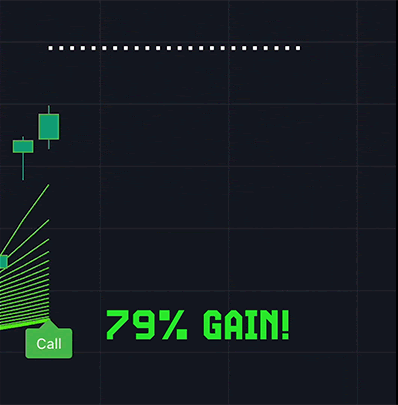Ticker Reports for April 8th
Who Led Buybacks to End 2024? Hint: It Wasn't Big Tech
Big tech has become known for its big-time use of buybacks. In the last quarter of 2024, Apple (NASDAQ: AAPL), Alphabet (NASDAQ: GOOG), Meta Platforms (NASDAQ: META), and Microsoft (NASDAQ: MSFT) spent nearly $51 billion on share repurchases combined. This makes sense, considering the very strong balance sheets of these firms and their massive size compared to the rest of the market.
However, big tech firms weren’t the only ones spending heavily on buybacks. Here’s a look at the three non-tech U.S. stocks that spent the most on buybacks in the last quarter of 2024.
UnitedHealth Goes Big on Buybacks as Shares Plummet in December
In the last quarter of 2024, UnitedHealth Group (NYSE: UNH) spent just under $5 billion on share repurchases. Notably, this is more than Meta and almost the same as Microsoft's spending. This buyback spending was equal to nearly 1.1% of the company’s $465 billion market capitalization as of the Dec. 31 close. This amount of quarterly buyback spending was massive compared to the firm’s history.
Over the past 10 years, UnitedHealth has spent an average of $1.2 billion each quarter on buybacks. Overall, in 2024, the company spent over $16 billion on share buybacks and dividends combined.
The company’s decision to vastly increase its share repurchase activity likely had something to do with the big drop in its stock price. In December, UnitedHealth shares dropped by over 17%. This coincided with the murder of UnitedHealthcare Chief Executive Officer Brian Thompson, which occurred on Dec. 4. The stock also got hit in December after President Trump said he would "knock out" pharmacy benefit managers. This is a big part of UnitedHealth’s business.
Overall, UnitedHealth's value dropped by nearly $100 billion in December alone. However, the stock held steady during the tariff turmoil that battered markets on Apr. 3 and Apr. 4. Over those two days, shares rose slightly.
Kroger Looks to Aid Albertson’s Hangover with Billions in Buybacks
Kroger (NYSE: KR) bought back just over $5 billion worth of stock last quarter. Kroger’s Q4 2024 results are for the three months ended Feb. 1, 2025. Kroger bought back these shares using an accelerated share repurchase (ASR) agreement.
Under this agreement, the company employed an investment bank to immediately buy and deliver nearly 66 million shares on Dec. 20. This represented over 9% of the company’s outstanding share count at that time.
This decision to engage in a huge amount of buybacks came after the company’s planned merger with Albertsons Companies (NYSE: ACI) fell through. Regulators blocked the merger due to antitrust concerns.
The company executed this ASR program under its $7.5 billion standard share repurchase program. Kroger has $2.5 billion in remaining buyback capacity under this program. This is equal to around 5.6% of the company’s $44.4 billion market capitalization as of the Apr. 4 close.
Exxon Spends Nearly $6 Billion on Buybacks, Eyes $40 Billion Through 2026
The biggest non-tech spender on share buybacks last quarter was energy giant Exxon Mobil (NYSE: XOM). Exxon spent nearly $5.8 billion on share buybacks in the last quarter of 2024, the fourth most of any U.S. stock. Overall, the company led its industry in shareholder distributions in 2024. It spent $16.7 billion on dividends and $19.3 billion on buybacks, for a total of $36 billion.
Exxon has drastically increased its spending on share buybacks post-2021. Since the first quarter of 2022, the company has spent an average of $4.4 billion on buybacks per quarter. From the first quarter of 2016 to the last quarter of 2021, the company only spent an average of $223 million per quarter on buybacks.
Despite this differing buyback activity depending on the period, Exxon has clearly outlined its policy going forward. Exxon plans to spend $20 billion on buybacks annually during 2025 and 2026. This $40 billion in expected buyback spending over the next two years is very substantial. It is equal to around 8.8% of the company’s $453 billion market capitalization as of the Apr. 4 close.
In addition, Exxon boasts a very solid dividend yield of 3.8%. The firm notes that it has increased its annual dividend for 42 years in a row. Only 4% of companies in the S&P 500 can make this claim.
This isn't RSI, MACD, or anything you've seen before
No more getting faked out by false breakouts that immediately reverse.
Just clean, precise entries when momentum is PROVEN to push prices in one direction.
Even though I've kept this under wraps for months, it's beginning to get clear to me that I might just be sitting on something that could change the narrative for a lot of traders.
So, with that, I've recorded a short presentation that goes over how this is all possible and why now's the best time to use this.
Qualcomm Breaks Down But RSI Signals It's Severely Oversold
After months of pressure, Qualcomm Inc. (NASDAQ: QCOM) has officially cracked and fallen below $150.
Shares sank to fresh multi-month lows on Monday, falling back to levels last seen in November 2023.
With markets in chaos thanks to tariff fears and mounting geopolitical tensions, investors have been selling first and asking questions later.
The tech giant has now dropped more than 25% from its February high, and yet, even in this brutal environment, there are signs the tide may soon turn.
RSI Signals a Rare Oversold Setup
A key technical indicator is now flashing a signal that should be on every trader's radar. Qualcomm's relative strength index (RSI) closed yesterday at 25, putting it deep into oversold territory.
The RSI measures the speed and magnitude of recent price movements to identify whether a stock is overbought or oversold. Readings above 70 typically suggest a stock is extremely overbought, while readings below 30 indicate it is extremely oversold. A reading of 25 tends to be unsustainable, which means the intense selling pressure may soon be reaching an exhaustion point.
What makes this particularly interesting is the historical precedent. The last time Qualcomm's RSI dropped this low was in October 2021. What happened next? The stock rallied 55% in the following months. There's no guarantee history repeats, but in markets like these, patterns like that deserve a closer look.
A Vote of Confidence Hidden in Plain Sight
Even as the share price has been under pressure, Qualcomm's management is clearly feeling confident about the company's trajectory.
Last month, they raised their dividend, one of the strongest signals a company can send to the market.
A dividend hike isn't just about returning capital to shareholders—it's a public commitment to future cash flow.
If there's any risk they won't be able to maintain the higher payout, they'll avoid the move entirely.
That decision suggests Qualcomm sees its earnings remaining strong over the coming quarters.
With the company already reporting solid results in its last earnings print, the pieces may fall into place for a sentiment reversal.
Earnings Are the Next Big Catalyst
All eyes are now on Qualcomm's next earnings report at the end of the month. The company beat expectations in its previous report and still felt confident enough to reward shareholders with that dividend increase. If they can deliver another clean set of numbers, the current sell-off could quickly look like a serious overreaction.
Until then, every session is worth watching. Monday's price action was particularly telling; despite the early plunge, Qualcomm bounced more than 13% off the lows before the close. That kind of reversal intraday signals there's demand waiting in the wings, especially at these levels.
What Happens Next
The wider market will play a role here. If the S&P 500 continues to slide, Qualcomm could face more pressure. But at these levels, the risk-reward is shifting. Technical indicators suggest the stock is overly stretched to the downside, while fundamental signals like the dividend hike show internal confidence. With earnings looming, this could prove to be a textbook oversold bounce.
Final Thoughts
Qualcomm's chart looks ugly, but not without promise. An RSI reading of 25, the lowest since late 2021, combined with a strong dividend move and signs of demand at the lows, offers a compelling setup for those willing to step in early. With earnings around the corner, the next few weeks could decide whether this is just a pause in the downtrend or the beginning of a powerful comeback.
The Looming Doge Collapse
Elon Strikes Back
You may already sense that the tide is turning against Elon Musk and DOGE. Just this week, President Trump promised to buy a Tesla to help support Musk in the face of a boycott against his company. But according to one research group, with connections to the Pentagon and the U.S. government, Elon's preparing to strike back in a much bigger way in the days ahead.
Tesla's #1 Bull Cuts Target But Says It's Still a Buy
After a brutal few months, Tesla Inc. (NASDAQ: TSLA) closed Monday at $233, down another 2.5% after tagging a fresh low earlier in the session.
The broader market is feeling the heat, too, with the S&P 500 continuing to whipsaw and briefly dipping to a new 52-week low amid intensifying fears around tariffs, trade wars, and geopolitical volatility.
Tesla shares are now 52% below their December all-time high, but for nearly three weeks, the stock has been consolidating between $220 and $250, and it looks like the bears might be struggling to push it lower. However, just as the stock appears to be stabilizing, a fresh headline could muddy the water once again.
A Cut That Still Implies Big Upside
On Monday, Wedbush's Dan Ives, Tesla's most vocal Wall Street bull, reiterated his Outperform rating on the stock but significantly slashed his price target from $550 to $315. This came in the wake of what he called a "perfect storm" of challenges. That's a hefty 43% cut and one that caught plenty of attention given Ives' longstanding optimism around Tesla's long-term prospects.
Still, despite the downgrade, he maintained an Outperform rating and emphasized that even with the lowered target, he sees a 35% upside from Monday's closing price. That's a meaningful number, especially for a stock that's already down by half in just a few months.
The rationale behind Ives' target cut centers on the sweeping tariffs announced last week by President Trump. Ives called the measures a "disaster" for Tesla, pointing to the potential for consumer backlash in China and Europe, where Musk's alignment with the Trump administration may be more politically damaging than beneficial.
In Ives' words, Tesla has "essentially become a political symbol globally," a shift that's doing real harm to the brand. He estimated the company has already lost 10% of its future global customer base due to "self-created brand issues," a number that could climb to 20% in key European markets. With protests erupting over the weekend and the optics around Musk worsening, Ives warned that the company is facing a "brand crisis tornado" that has morphed into an "F5 tornado."
But Not All Is Lost
Despite the warning tone, Ives hasn't lost faith in Tesla's long-term roadmap. He still sees meaningful value in the company's autonomous driving capabilities, potential lower-cost models, and robotics ambitions. He explicitly called on Musk to "step up, read the room, and be a leader," hinting that the right messaging and execution could still turn the ship around.
In that light, the reduced $315 target looks less like a warning to sell and more like a recalibration of timing. Wedbush is now reportedly reworking its projections for 2025 and 2026, but the core thesis that Tesla remains a long-term innovation leader hasn't been abandoned.
A Technical Setup That's Starting to Stabilize
While headlines continue to swirl, the chart tells a story of a stock finding its footing. The area around $230 appears to be forming a firm support base, and as long as the stock holds above it, the risk-reward setup continues to look attractive for investors with a higher risk appetite. A move above $250 could start to attract technical buyers and force shorts to cover, especially with the broader market bouncing off last week's lows.
Meanwhile, the RSI continues to rise off deeply oversold levels, and the MACD remains in positive territory after flipping bullish earlier this month. The bears may have controlled the narrative for most of Q1, but technically speaking, they're losing momentum.
What's Next
The next major catalyst is Tesla's earnings report later this month. Expectations are low, and that's not necessarily a bad thing. It could be enough to re-ignite investor interest if Musk and the team can deliver even a modest upside on deliveries or margins and avoid additional political missteps.
Still, the risks are very real. The backlash in Europe and China, combined with domestic political scrutiny, creates a difficult environment. Add in tariff uncertainty and a skittish equity market, and it's clear Tesla is still navigating through stormy waters.





